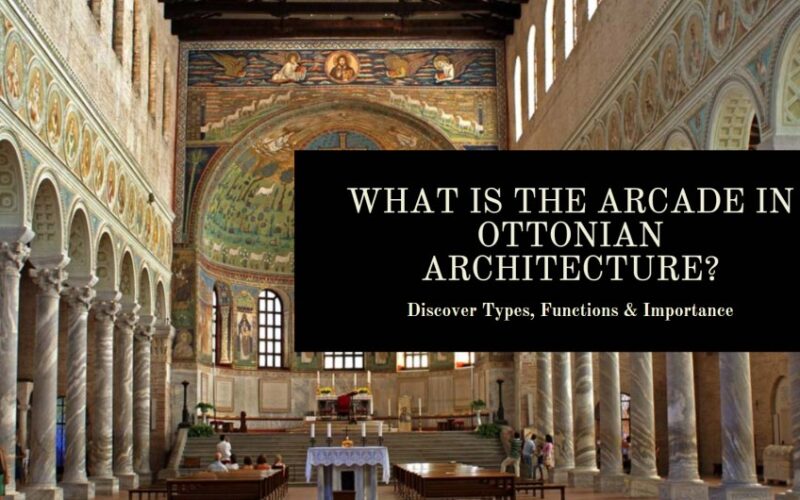Have you ever been amazed by old buildings and wondered what makes them special? Ottonian architecture is a style from Europe that flourished in the 10th and 11th centuries. And exactly what is the arcade in Ottonian Architecture? Arcade is one of its standout features. It is a design element that adds beauty and functionality to these incredible structures.
Let’s discover the beauty of Ottonian arcades by exploring their different types, purposes, and importance in this amazing architectural style.
What is an Arcade?
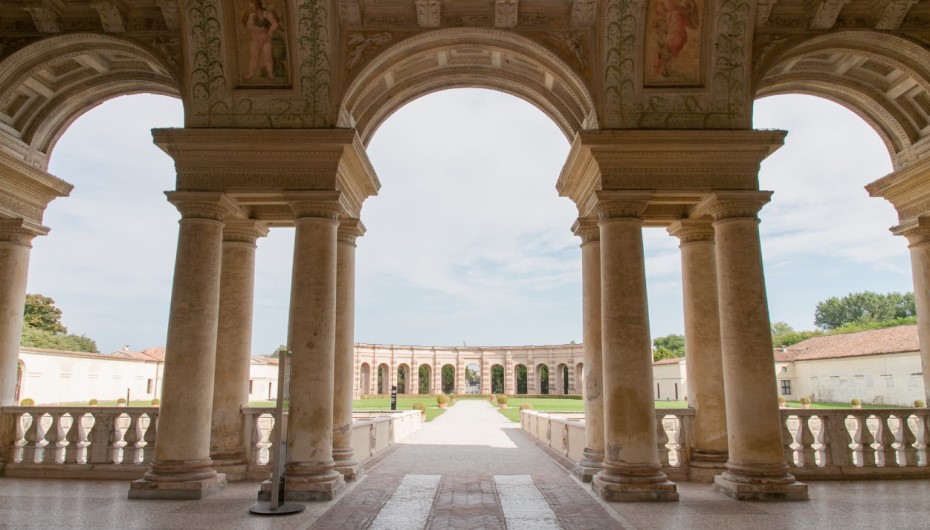
An arcade is a series of arches held up by columns or pillars. It creates a stunning visual effect. It’s like walking through a grand hallway with intricate carvings and ornate details.
The arcade was a key feature in building churches and other religious structures. Today, you can find arcades in old churches, palaces, and courtyards. They were useful and looked nice too.
What is Ottonian Architecture?
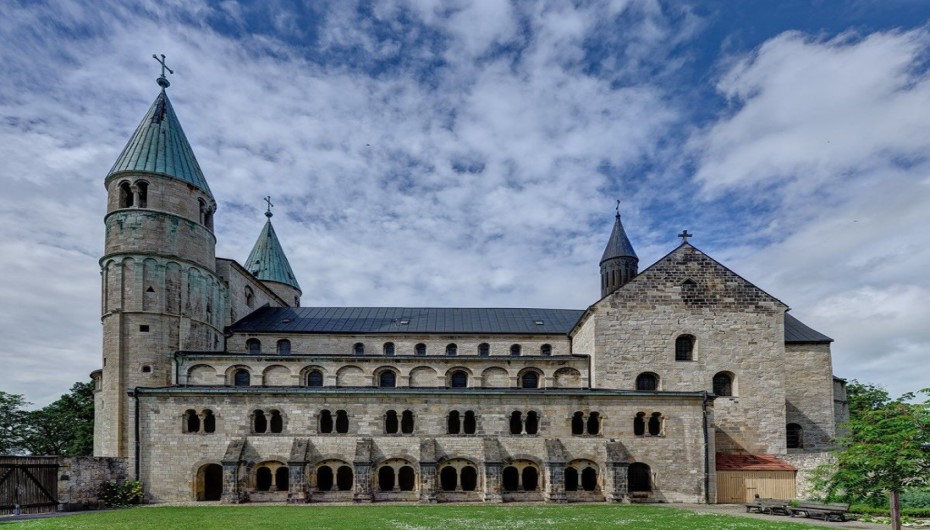
Ottonian architecture was a building style that developed in Germany during the Ottonian dynasty, from around 900 to 1000 AD. The Ottonian architecture was popular in the 10th and 11th centuries, mostly in Germany and Belgium.
It was a time of new beginnings and creativity. Buildings were made with a mix of old Roman and Byzantine styles. They featured detailed carvings, decorative archways, and geometric patterns that fit together harmoniously. They used stone to build strong and tall structures.
During this time, architects aimed to create functional beautiful, amazing spaces. They built big churches, religious communities, palaces, and smaller buildings like prayer rooms and burial vaults. These structures showed off the power and devotion of rulers who wanted to boost their authority.
Ottonian architecture is special because it combines different styles, has excellent craftsmanship, and pays close attention to details. It combines art, religion, and politics in a way that created incredible buildings that still inspire us today with their lasting beauty.
Different Types of Arcade in Ottonian Architecture
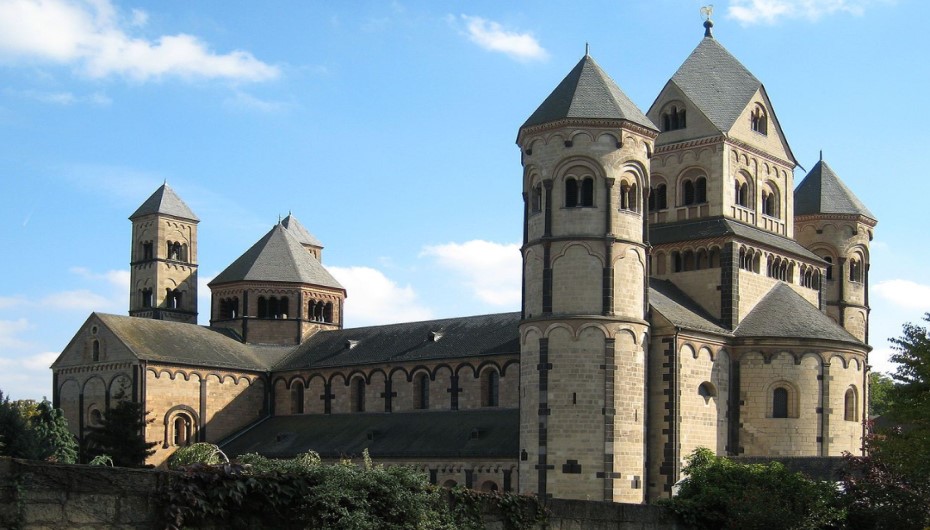
Ottonian architecture features different types of arcades. Each one is special and unique. They have different shapes, columns, and decorations. As we now know these arcades were an important part of building design and function back then.
The architects made buildings look beautiful, inside and out, and that’s what made this style of architecture so special during medieval times. Let’s take a look at these different types of arcades in Ottonian Architecture.
1. Open Arcades
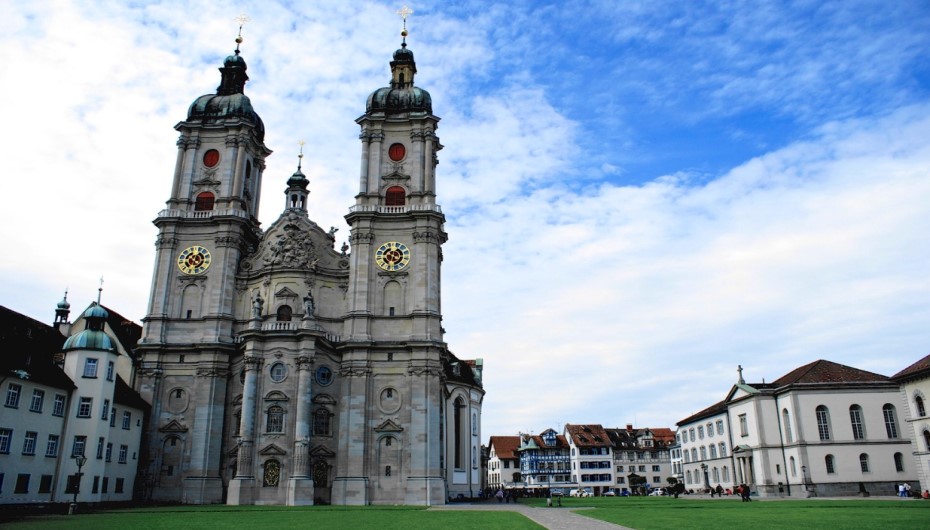
In Ottonian architecture, an open arcade is a row of arches with no walls in between. This makes the space feel open and connected to the outside. Open arcades make a grand entrance, mark important areas, and connect inside and outside spaces.
They also add visual interest and rhythm to the building’s facade. A great example of an open arcade in Ottonian architecture is the courtyard of the Abbey of St. Gall in Switzerland.
2. Blind Arcades
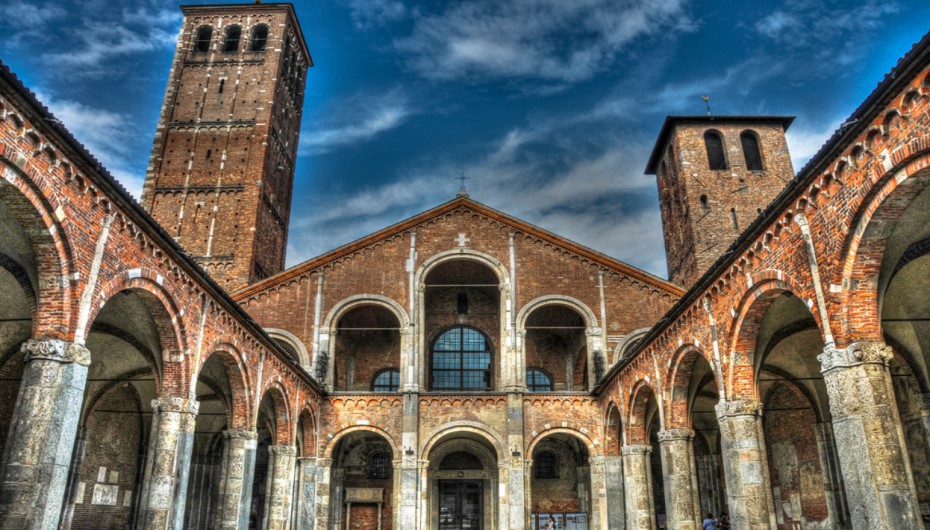
A blind arcade is a decorative wall feature with a row of arches, but no windows or openings. It’s used to add visual interest and rhythm to a building. It also breaks up a large wall and creates a sense of unity. A good example of a blind arcade is the facade of the Sant’Ambrogio church in Milan, Italy.
3. Arcades With Mixed Piers & Columns
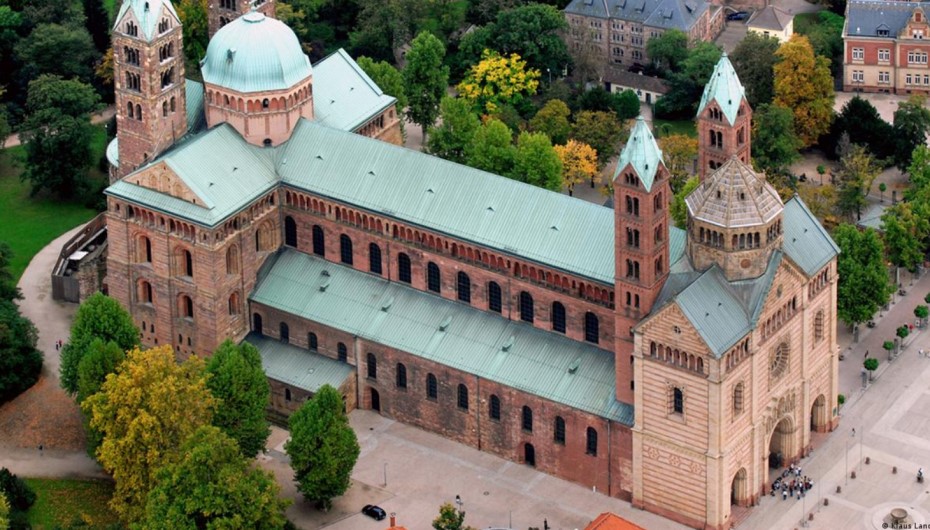
It consists of a row of arches supported by solid walls and cylindrical columns. This mix creates a visually interesting effect, adding variety and rhythm to the arcade. It’s like a game of alternating solid and void, light and shadow.
It creates a sense of depth and texture. This design element adds visual interest and breaks up a long row of arches. A great example of an arcade with mixed piers and columns is the Speyer Cathedral in Germany, built in the 11th century.
4. Multiple Arch Arcades
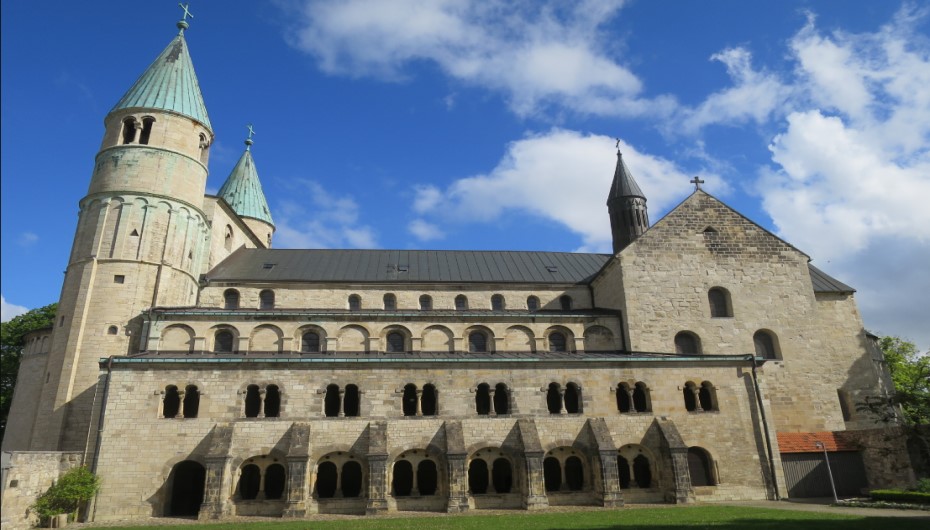
A Multiple Arch Arcade is a row of arches with smaller arches inside each one. It creates a layered and interesting effect. It’s like a series of arches within arches, adding depth and visual appeal to a building.
This design element breaks up a large surface area and creates a sense of rhythm and hierarchy, It’s a beautiful and intricate feature that adds complexity and sophistication to a building. Saint Cyriakus in Gernrode, is its example.
Purpose of The Arcade in Ottonian Architecture
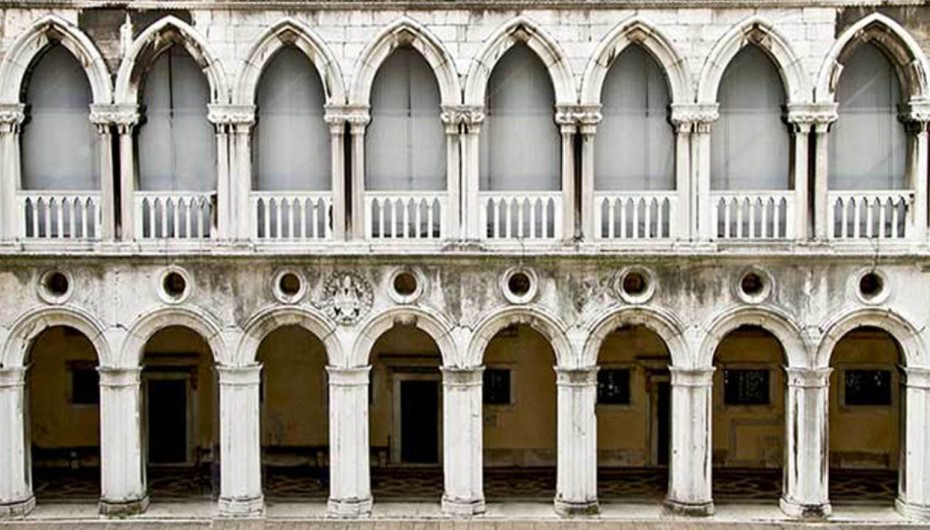
The main purpose of the arcade in Ottonian architecture is to hold up the building. The arches work together to make the walls and roof stronger. This allows for bigger, more open spaces inside. The arcade also creates a nice rhythm and feeling in the building. The repeating arches make a pretty pattern.
Another function of the arcade in Ottonian Architecture is to connect different parts of a building or lead from inside to outside. Arcades also displayed important religious art and objects. Art like sculptures and paintings was placed in small spaces on the walls.
The art made the space pretty and taught people about religion. Arcades were helpful and looked good, making buildings useful and nice. We can say that the architects thought carefully about how their designs would work and look good.
Importance of The Arcade in Ottonian Architecture
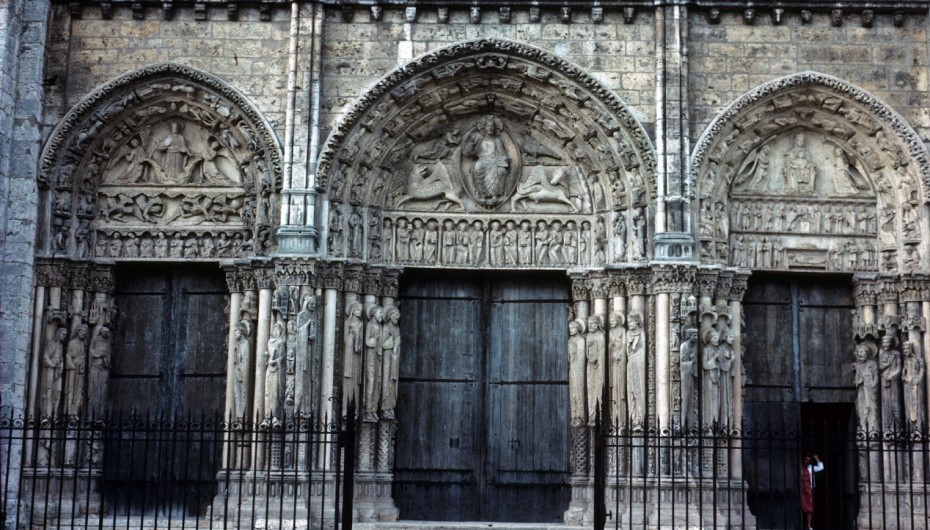
The arcade was a key feature in Ottonian religious buildings. It made them feel grand and spiritual. The arcade framed beautiful decorations like paintings and sculptures, it showcased them. The repeating arches drew attention to these decorations, showing how important they were in the sacred space.
The repeating arches and columns created a sense of rhythm. This rhythm guided people as they moved through the building. It helped people feel close to God.
Arcades let in light and sound. The spaces between the arches allowed natural light to enter through colorful windows or high openings. The arches also made music and singing sound better during religious services.
The arcade was very important for creating a special experience in Ottonian buildings. It was both beautiful and helpful, making it a necessary part of churches and monasteries.
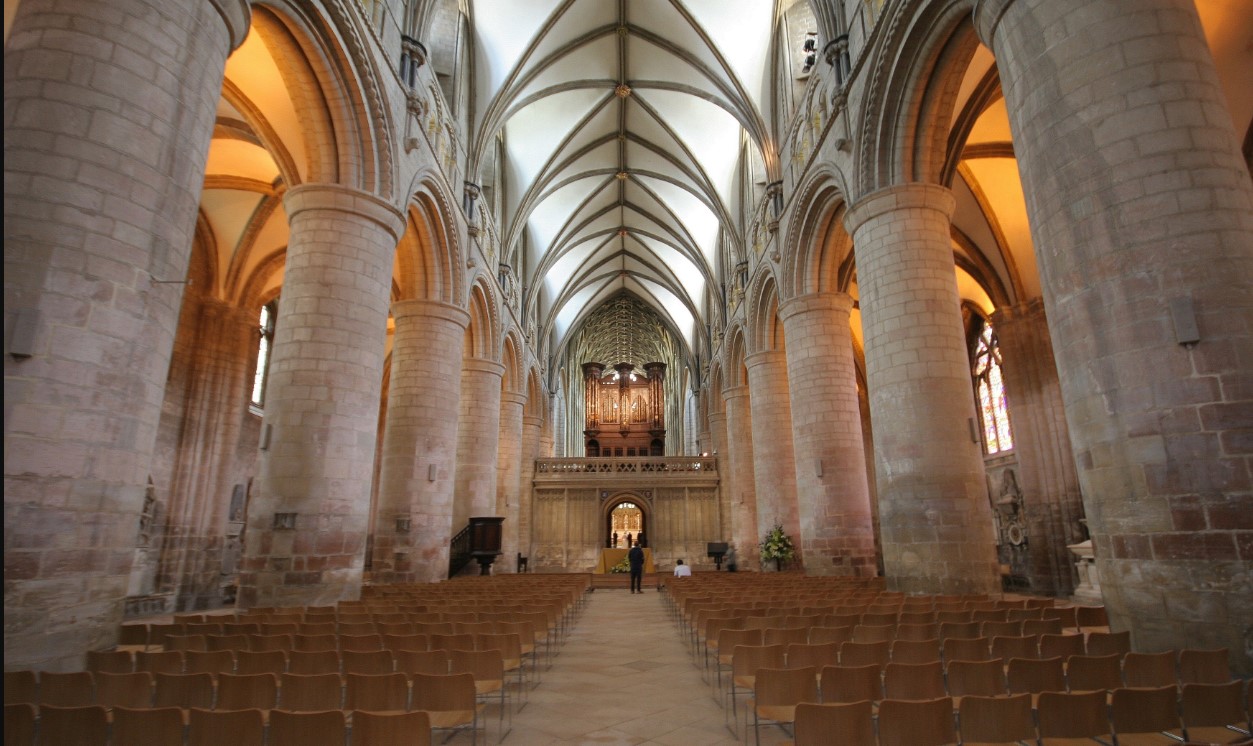
Conclusion
In short, The arcade was an important part of Ottonian buildings. It made them feel big and special. The arches and columns helped people move through the building and see the beautiful decorations. We still admire its beauty and design today. We hope that this information has answered your query about: what is the arcade in Ottonian Architecture?. Although many people have built different styles of homes by following this architecture.
Frequently Asked Questions (FAQs)
Which is An Example of Ottonian Architecture?
One of the best-preserved examples of Ottonian architecture is St. Cyriakus Church in Gernrode, Germany, built between 960 and 965.
Why is It Called An Arcade?
The word “arcade” comes from the Latin word for “arch”. An arcade is a structure with arches and columns. It can also mean a covered walkway with shops or stalls, like an old shopping center.
What are The Characteristics of The Ottonian Style?
Ottonian art includes many traditional medieval art forms, such as beautifully decorated books like illuminated manuscripts, ornate metalwork, detailed carvings, and Romanesque-style churches and cathedrals.
What is An Example of Ottonian Art?
Examples of Ottonian art include the Gero Cross, illuminated manuscripts like the Book of Gospels of Otto III, and intricately carved ivory plaques like the Magdeburg Ivories.
What is The Clerestory in Ottonian Architecture?
A clerestory is a high window in a church that lets in lots of natural light. It’s like a big skylight.
